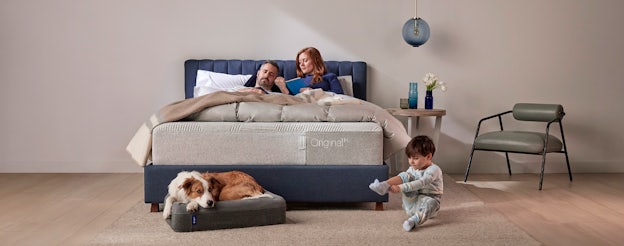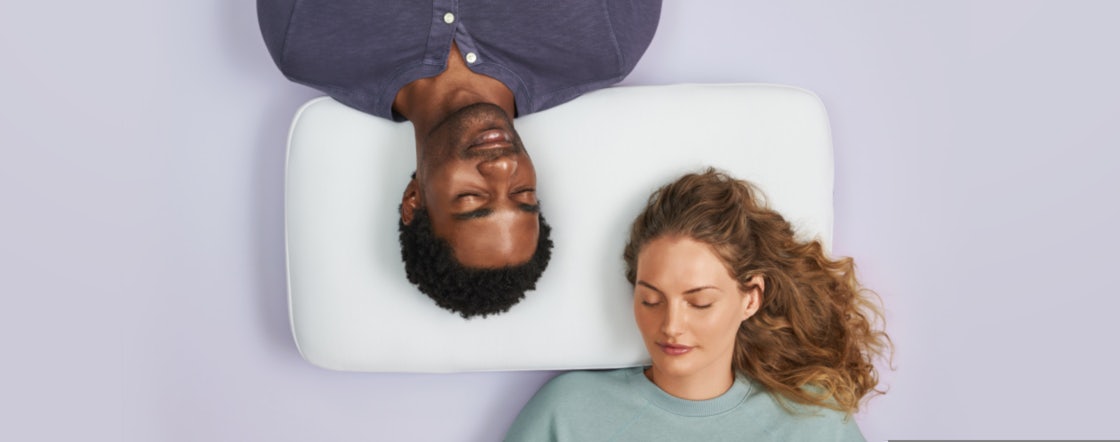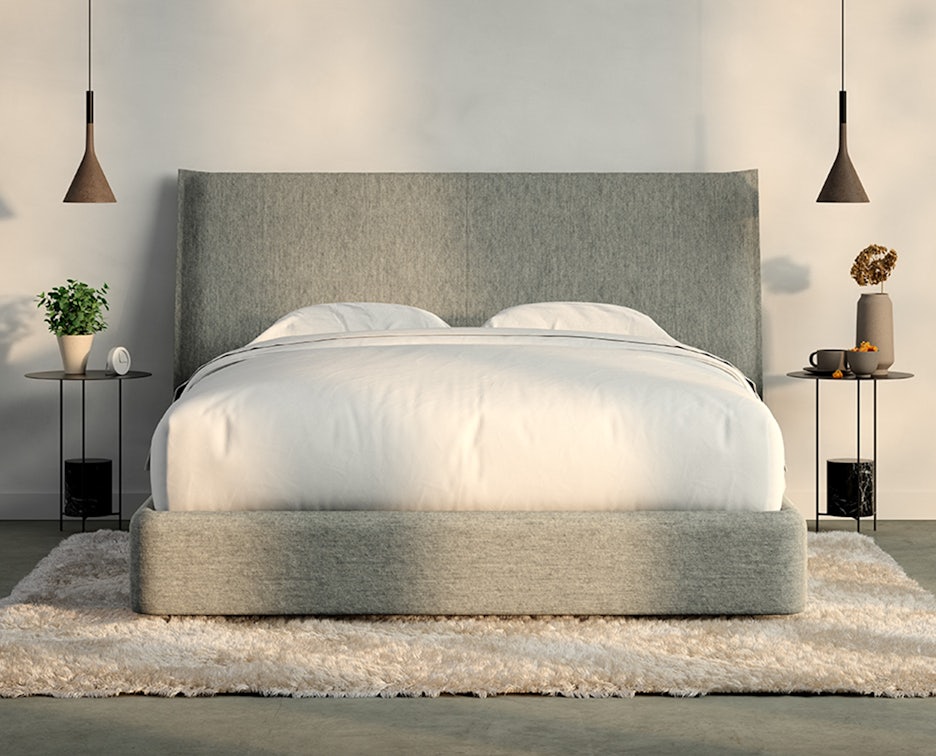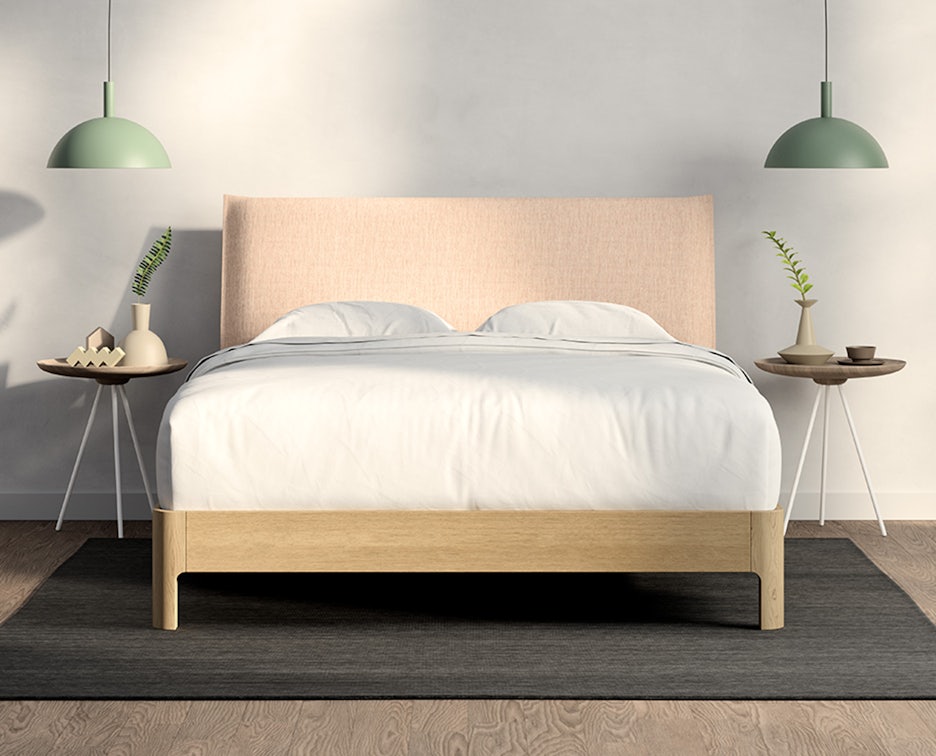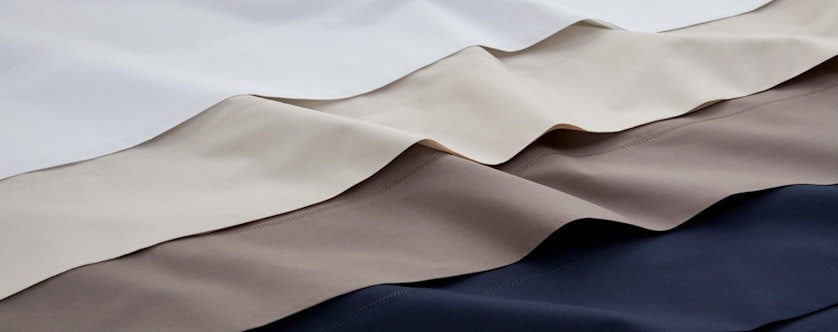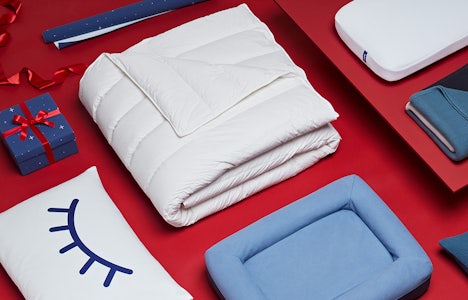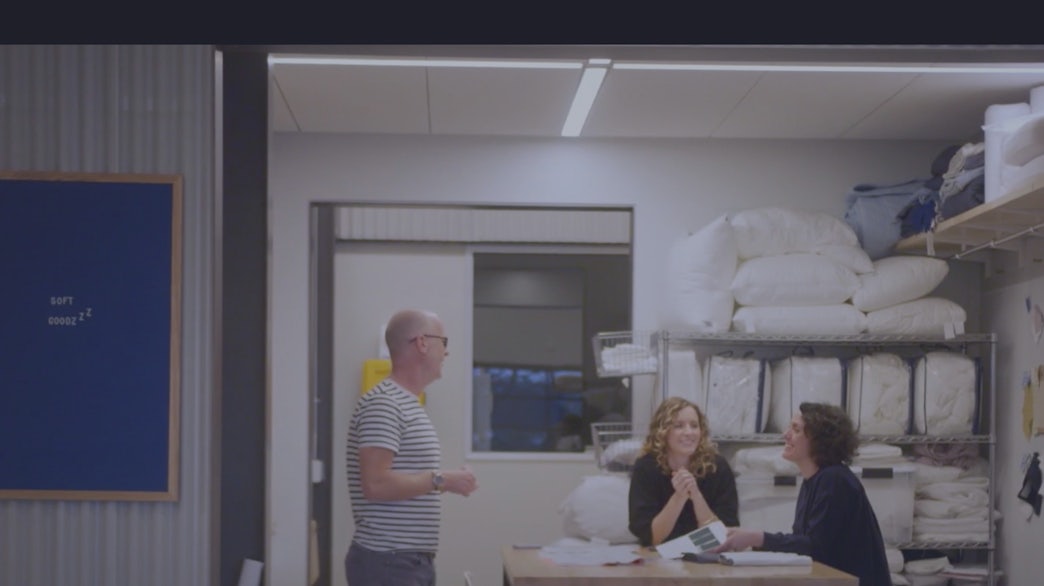
Under the Covers
with Liz Boscacci
A look at what dreams and our new bed frames are made of.
Good sleep takes meticulous design. While you’re zonked out in an REM sleep cycle, material designers like Caroline Cockerham are dreaming up new ways to keep it that way.
We sat down with Caroline Cockerham, Material Development Manager at Casper Labs to learn more about the science behind designing & developing sleep products — and to pick up some sleep tips that only someone with a pseudo Master’s in sleep can provide.
How does one become a materials designer?
Material design is in Caroline’s blood. Born and raised in North Carolina, she comes from a long line of textile workers. “My great-grandfather died on the steps of a textile mill,” she explains, half joking, half very serious.
Caroline got her “bed-and-butter” skills studying Fashion & Textile Development at North Carolina State University. Incidentally, her first work experience was at a local textile mill in North Carolina that made fabric for mattresses. The experience gave Caroline a deep understanding (a “look under the covers” if you will) of sleep design. Pretty niche stuff. So niche that when she left, she thought, “I guess I’ll probably never work on mattresses again.”
After picking up a Master’s in Sustainable Textiles and Apparel, Caroline entered the fashion industry. She explored sustainability through outdoor and activewear brands like Lucy Activewear and Patagonia. In fashion, Caroline focused on reducing waste across the apparel supply chain. To do so she designed products and processes that utilize 3D knitting.
But then, in 2017, Caroline was beckoned back to bed.
At Casper, Caroline applies her technical expertise from apparel design and development to make a night’s rest a whole lot dreamier. She is able to apply a fervor for sustainable, high-tech fabric innovation to a challenge that plagues almost everyone: getting better sleep.
Her swansong? Temperature control.
When designing clothes, Caroline explains, you’re often on the hunt for dynamic insulation with minimal material. (Think of the perfect running jacket — a thin, mobile material that keeps you dry yet warm). When it comes to your sleep, designers must do the opposite: they must make a massive insulator (aka the mattress) a consistent temperature for the perfect night’s sleep. It’s a paradox that has challenged designers forever. In the Casper era, designers like Caroline take on some of the most sophisticated approaches to date.
How do you design “good sleep?”
Designers and engineers at Casper agree — good sleep starts with thermoregulation. That is to say, the right design unifies the right materials to maintain the right temperature for your body.
Caroline spends most of her days working to keep Casper’s sleep products cool, and she doesn’t cut corners to get there. “A lot of manufacturers just slap chemicals on their products to keep them cool,” she says. “For me, it’s more about yarn, textile construction, and overall breathability of the system.”
What even is “Breathability?”
“Breathability” is the gold-star metric for material designers when solving for thermoregulation and sleep comfort. The more air that can escape from the mattress, the easier the sleeper will be able to “evaporatively cool.” (This is basically what your body does when you sweat). To get a sense of the process, Caroline recommends you blow on a handful of your shirts and feel the air pressure behind them. Certain fabrics don’t allow for air to pass through, which for clothing can be advantageous. But in the sleep world you usually want more breathability.
At Casper, every product is tested rigorously. Breathability is measured in CFM (cubic feet per minute) by an unbiased third party vendor. The capacity for a mattress to dissipate heat and humidity is measured by a device called a “sweating thermal sacrum.” Caroline admits, the hyper-specific physics might seem a bit “overwhelming” to the everyday sleeper.
“Sometimes I’m like, ‘I’m glad we spent a year and half freaking out over a bunch of rectangles.” But ultimately she says the rigorous testing and attention to detail make for a superior product. “The test results speak for themselves. Knowing that people are sleeping better makes me sleep better.”

What are textile trends you see on the sleep horizon?
Caroline sees the evolution of textiles moving towards more sustainable, environmentally-friendly fabrics that lead to optimal quality and minimal waste.
At Casper Labs, that means starting with fiber. The team searched high and low for a fiber that was more environmentally-friendly while also checking the boxes of Casper’s strict standards for quality and comfort. Caroline excitedly explains that these new fabrics use a special yarn blend with recycled polyester and upcycled cotton. “The recycled polyester is derived from water bottles and the upcycled cotton comes from t-shirt factories. It’s overall a great waste diversion with massive savings in energy and water consumption.”
Now you can say that it’s better for everyone if you sleep more.
What’s it like to sleep with someone so obsessed with sleep perfection?
Material designers like Caroline certainly see the world through a different lens, or fabric, than the rest of us. “It’s really hard to shop,” she confides, explaining that most of her furniture is bought second-hand, and that her bed set-up is “always in flux.” She enjoys testing products every season in her own home, and has even rallied her partner around the joys of sleeping scrutiny.
“When my partner said, ‘I really love this sateen,’ I knew the relationship was really working out.”
Psst… she’s referring to these babies.
Since we’re all at home all the time now… what about PJs?
✓ Think of your sleep system like a layering kit, and work from a place of a “hot” sleeper. Designers tend to work that way on your mattress already. You can always add layers to your mattress or your clothes to warm up, but it’s damn hard to cool it down without the right materials in the first place.
✓ The coolest PJs? No PJs at all.
✓ For a layer above nude, think knits. They stretch and they aren’t constrictive.
What do you love the most about your job?
Caroline’s favorite part of her job is the moment in which she gets to open up packages from the mill containing new materials and Casper products. “I love it when my packages come in. It’s like Christmas every week. When I’ve gone through a lot of time to develop a concept with mills, then they’ve done the hard work of making that an actual physical product. When you get to see the product made the way you want… that’s really rewarding.”
Ah, the joy of a cool night’s rest delivered right to your doorstep.
